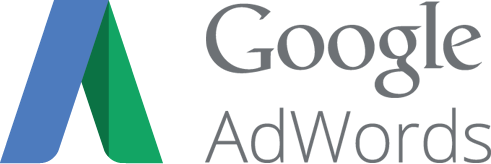Brad Post, Create the Movement: Welcome to the next edition of our podcast. My name is Brad Post. I’m sitting here with Josh Rich.
Josh Rich, Create the Movement: Hello, hello everyone.
B: Josh, how are you, sir?
J: Doing well Brad. How are you?
B: Good, good. So, today we are going to be talking about…
J: AdWords.
B: AdWords.
J: Google AdWords.
B: Google AdWords, okay.
J: Google AdWords are those, like, I guess now it’s four, used to be three. But nowadays it’s the top four results anytime you do a Google search that people are paying for. They’re typically yellow, I think, kind of a yellow-highlighted box around them
B: Says ‘Ad’?
J: Yeah, says ‘Ad’. There used to be three and some on the side. And now they got rid of the sidebar. Now it’s only four. That happened, like what, two, three months ago?
B: Three months ago. Yeah.
J: So, that’s kind of fun. But, it’s a really great way if you have a new site that doesn’t have a whole lot of like SEO behind you.
B: Okay.
J: It’s a great way to get traffic especially if it’s not a super-competitive keyword. I will say AdWords is definitely not for everyone – depending on the market that you’re in. You know we have an insurance company, as a client right now, we don’t do AdWords for them because they’re competing with like Allstate and Geico. So, it’s like $50 a click, something like that? Something ridiculous.
B: Yeah, they have crazy budgets.
J: And so, if you’re competing on that level and just a local company it’s not for you. Because you’re not going to be able to compete. You’re going to be able to afford like two clicks a month. It’s just not worth it. Not worth it.
B: Right.
J: But, if you do have, if the clicks are affordable, if the keywords aren’t super competitive, then it really is a good way to get an influx. Especially, like I said, if you are launching a new campaign, or a new product, or new service or something like that, and you want to get some traffic to your site. That’s something that we recommend a lot if people are like adding a new service, is to do, kind of like, an AdWords blitz. Just because, you know, if you wrote content that’s pretty fresh, you know, Google may have indexed that, but they don’t trust it too much yet. But if you get a lot of traffic to it, and people are actually spending good time on-site, that will kind of increase your SEO efforts. And that way you can, kind of, start out with AdWords pretty heavy, and then as time goes on kind of ween off that. And then kind of increase your SEO efforts. It’s an easy way to get started.
B: You mentioned a new site in the very beginning, kind of rewinding a little bit.
J: Yeah.
B: So, basically somebody that’s starting out with a brand-new URL?
J: Yeah. No domain authority, no domain juice, anything like that.
B: Google doesn’t see it as
J: Trustworthy.
B: Right, because it’s a brand-new site.
J: Exactly. So, they don’t really know what to think of it yet. But it’s a good way to establish yourself as credible, and get some authority with Google.
B: Okay.
J: All right. So, AdWords is pretty tricky if you’ve never done it before. It can be somewhat overwhelming. So, we just kind of want to give everyone kind of a really broad overview of like how to get started in it. And some step-by-step stuff that you can take just to get your feet wet. And that way, you can kind of know a little bit about AdWords, and what to do.
So, the first thing you want to do is set very specific goals. You don’t want to say, “I just want to drive more traffic.” Or, “I want to sell more widgets.” You want to say, “Hey, I want more people to go to this landing page. I want more people to fill out this contact form. I want more people to do this, or that.” Because that’s really going to dictate how you do everything else, and how you arrange your keywords and everything like that. So, make sure that you set a very specific goal and it can be more than one. As we’ll get into it, you know, you can have these things called ad groups, and each one of those can have different goals. But like I said, we’ll kind of touch on that more here in a second.
But set goals and know what they are so that you can accomplish them.
B: Okay.
J: The second step, and I would argue probably the most important step, would be to research. And so, the first thing that you would want to research is your keyword. The keyword is what people search for whenever they’re, you know, trying to find what they need. And so you’re going to tag that, “I want to show up for this widget or this service in my area.”
And so, you want to see, first of all, how competitive it is. How much it costs. There’s different tools you can use to get the forecast on that. And so, that way you know how much you’re, roughly how much you’re going to be paying per click. And so, that way you can kind of set your budget and everything like that.
The next thing you’re going to want to do is look at your competition. Also, some tools called SpyFu that you can use to see how much your competition is paying. And that will also give you a gauge on how much you’re going to be paying.
Like I said, you know, going back to our insurance client, we saw that there’s no way we can compete with that. So, let’s not even try.
B: Right.
J: But if you see that your competition is just paying, you know, a couple of bucks a click, then yeah, sure you can do it. But you want to make sure that you’re setting that budget to where you’d be competitive. That way you’re not just wasting your money.
B: Right.
J: The third thing you want to research is your audience. And that’s kind of a combination of your keywords and your competition. But you want to know how they search, what the search for, kind of what volumes they search for. So, that way, you know where to allocate your money.
B: Okay.
J: Like I said, all three of those things will help you set your budget. And that’s something that’s super important is to make sure that you have a rock-solid budget that’s both competitive and allocated to the right spots, the right keywords, and the right places.
The next step you want to do after you do your research and set your budget, is you want to make sure your site is built in a very conversion-focused way. And what I mean that is that once they get to your site you need to make sure that it’s very clear to the viewer what the next step is and what you want them to do. If you just have like a home page, that’s not necessarily, they don’t know what to do with that. But if they Google a service like car detailing, you know? You need to direct them, I would recommend to like a landing page not necessarily the home page, that will say like, ‘Free Estimate Here’ or ‘Contact Us Here.’ You know? Gives them a price, or something like that. Something that there’s not a lot of steps to get to the conversion. You know? Remove as many barriers as possible and take them directly to where they need to be can convert and become a customer.
B: A lot of people will just put it to their homepage and then assume that they’ll filter through the site. And know how to filter through the site.
J: Exactly.
B: But you would say more go into a car-detailing page.
J: Yeah, landing page.
B: And here’s what we do when we detail your car.
J: Yeah, exactly. And so, another thing be very conversion focused. And so, once you’ve kind of set that up, and we can do a whole podcast on how to have conversion-focus a site. I think we could do a whole podcast on researching keywords, competition, not/ands. So, we’re giving a very broad overview, but it is still helpful to have this information.
So, once you have done all of that you’ll need to start picking your keywords. And I would recommend, especially if this is your first time getting into AdWords, to not have this, like, really exhaustive list of keywords. I would recommend starting small – maybe five or ten. Just so that way you can get a gauge on what works and what doesn’t. And kind of weed out the process like that.
And then, once you kind of figure out, let’s say you have like seven keywords, and three of them work; four of them don’t. So you get rid of the ones that don’t work and keep the ones that do. Once you have the three that do start making variations off that. So, do plural forms, or do, kind of, synonyms or just common variations of that. Or, use instead of ‘for sale’ do ‘for hire’, or, something like that. You can kind of play with the words and re-arrange them and see if those variations work.
And that’s a good way to expand your keyword list and see what people are searching for and what’s the cheapest. And whenever you’re picking your keyword you kind of want to find the sweet spot of the highest search volume, but the cheapest keyword. Typically, the highest, most competitive keywords are going to be the most searched keywords. But, you know, a lot times people don’t have the budget for that so you kind of want to find that middle ground.
B: Okay.
J: That’s a good way to get to that number one spot in the page, and that’s the one people are going to click the most.
So, once you’ve kind of narrowed down your keywords, and you have a good list of them, start arranging them into what’s called ad groups. And that’s just basically a way to group them into, like, different categories that mean they’re all the same thing. So, like, car detailing is what we talked about earlier. So, it could be like a group of like exterior car wash keywords versus interior car wash keywords.
And then the advantage of doing that is that you can set different landing pages for those ad groups, and kind of, it’s easier that way. You don’t have to, like, manipulate each keyword. If you do have a list of a 100, you can just tweak five groups versus a 100 words. You could also set different goals for those individual ad groups. And that kind of helps you be more strategic with that.
Once you’ve got all that up and running it’s basically just kind of tweak and track is what I would say. The first three to six months are going to be the more labor intensive months. You’re trying to figure it out and see what people are doing. But I think once you get past the six-month mark, hopefully, you should have that figured out, and you can kind of set it on auto-pilot. You still need to check in on it every now and then. But for sure, the first three-months you should be checking it almost daily to see, kind of, how things are going. Otherwise, you’re going to end up wasting some money.
B: Right.
J: And one trick that we use a lot is negative keywords. And so as you’re going through you’ll see that people will, like, search things then click on your site that have nothing to do with your site. We just ran an AdWords campaign for a roofing company after a big storm came through and damaged a bunch of roofs. And so, we noticed that someone searched ‘News Channel 6 pictures of storm damage’.
B: Right.
J: And somehow we showed up and they clicked on it. And that cost our client, you know, three bucks a click, I think it was probably more than that. So, then we saw that and went into the negative keyword section and said okay, if anyone searches ‘news’ don’t show us. We don’t want that. So that will save your budget for people that are actually looking for your business.
B: That’s why going through your ad groups you really want to look and see what they’re suggesting, correct?
J: Yes.
B: And deselect or select which ones.
J: Absolutely, because sometimes Google will, it’s an automated system whenever they do that, sometimes they’ll throw in some random keyword that you definitely don’t belong in or definitely don’t’ want. So, again why would someone click on a roofing company when they’re searching for news pictures is beyond me, but it happens.
B: Right.
J: The final stuff I would say, if you can, if you have the time, is to get certified. Google AdWords does have a certification program. I’m not certified, but I sit next to a guy who is, and he knows a lot more than I do. So, it is a good process, a good thing to have. Just so you know what you’re doing, and if you’re doing this for your clients, for sure, they know that you know what you’re doing too. And it gives you some extra confidence.
B: Or, if you’re a business looking at running AdWords, it’s good to go with a company that’s certified in AdWords.
J: Absolutely, yeah.
B: Because, I think, Google AdWords, their team is very helpful, and they can help you run through it, but you know, they won’t tell you, I mean they might not tell you about the ad extensions having a tracking Google voice number. How to set goals in Google Analytics.
J: Yeah. This was a very broad overview of AdWords. This is kind of more theoretical steps to take versus tangible steps.
B: So, either get certified, or hire a company that does do that.
J: Yeah, absolutely.
B: Good. Anything else, Josh?
J: I think that’s it.
B: Well, join us for our next edition of Create the Movement podcast.











